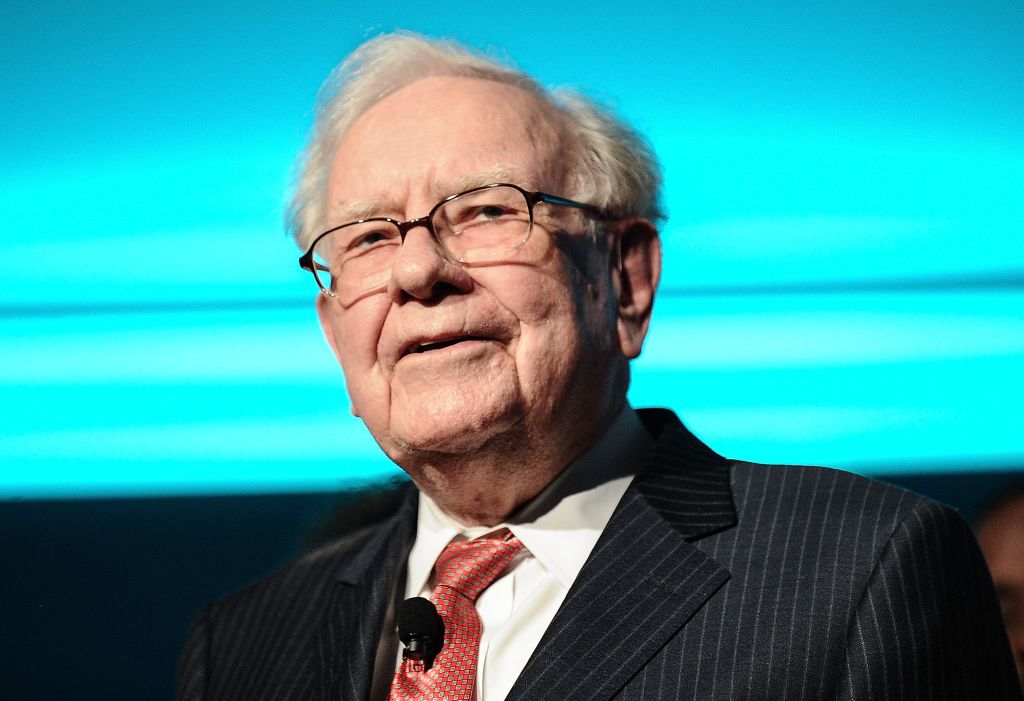Like Gold? If So, Buy Gold-Mining Stocks
Economic turmoil and a declining dollar are bullish for bullion. But the stocks are more attractive than the metal itself.

Few investments stir passions the way gold does. Its advocates see it as insurance against inflation, economic calamity and profligate governments. Its critics argue that gold's price is essentially driven by emotion and that, therefore, trying to determine the metal's true value is an exercise in futility. On top of that, note the skeptics, gold throws off no current income.
All of these arguments have merit, but for now the gold bulls seem to have the upper hand. If you don't own any gold, this may be a good time to add the yellow metal to your portfolio. Better yet, consider buying gold-mining stocks, particularly if you can stand an extra nugget of volatility.
Although mining stocks have rallied since July, they have badly lagged bullion over the past year and a half. Since April 8, 2011, the Philadelphia Stock Exchange Gold and Silver index has dropped 20%. Over the same period, bullion prices rose 14%, to $1,711 an ounce (prices and returns are through October 23).
From just $107.88 $24.99 for Kiplinger Personal Finance
Become a smarter, better informed investor. Subscribe from just $107.88 $24.99, plus get up to 4 Special Issues

Sign up for Kiplinger’s Free Newsletters
Profit and prosper with the best of expert advice on investing, taxes, retirement, personal finance and more - straight to your e-mail.
Profit and prosper with the best of expert advice - straight to your e-mail.
Bullion has climbed 7% since late June alone, primarily because the world is awash in bad news. Investors are worried about soaring budget deficits here and abroad and the instability that is causing in the euro zone in particular. They're concerned, too, that attempts by monetary authorities, including the Federal Reserve, to spur economic growth could unleash inflation down the road and lead to a weaker dollar. Gold does well when currencies are devalued because it's considered an inflation hedge, capable of maintaining its value over centuries. Because gold is priced in dollars, it benefits especially from a decline in the greenback, as it takes more dollars to buy an ounce of gold. "There is a collective effort around the world to stimulate local economies through the debasement of currency," says Doug Groh, co-manager of Tocqueville Gold Fund (symbol TGLDX). "The market is looking for a store of value. Gold represents that."
Low interest rates also benefit gold. When investors can earn a decent return from bonds or money-market funds, they tend to show less interested in gold. However, with bonds yielding little today and money funds essentially paying nothing, investors don't suffer a lack-of-income penalty when they buy gold. In fact, real interest rates for such things as money-market funds and ten-year Treasury bonds are negative -- that is, the stated yields are less than inflation.
Ironically, one of the biggest arguments against gold -- that it throws off no income -- doesn't apply to some mining stocks. Some of the bigger miners, such as Barrick Gold (ABX) and Newmont Mining Corp. (NEM), pay dividends. At its closing price of $38.91, Barrick yielded 1.8%. And Newmont, at $53.83, yielded 2.6%.
But don't invest in a miner for its modest dividends. Rather, buy gold stocks because their prices typically rise faster than the price of bullion. That's due to leverage -- because miners' costs tend to be relatively stable, their profits are typically magnified by changes in the price of bullion. "If you expect gold to be strong, mining companies should reflect that strength and do a little better," says Wasif Latif, vice-president of equity investments at USAA Funds, in San Antonio, Tex. (Of course, leverage can work in both directions.)
Barrick, the world's largest gold miner, looks attractive. S&P Capital IQ gives the Toronto-based Barrick its highest ranking, saying the stock is "compellingly valued" at a bit more than 7 times S&P's 2012 earnings estimate of $4.41 per share. "With its long-term gold production set to rise with the addition of new output from lower-cost mines, we believe ABX is well positioned for a rising gold price," S&P writes. Its 12-month price target for the stock is $52.
Tocqueville's Groh thinks some smaller miners are worth a look because they've become more efficient at producing gold, a development that isn't yet reflected in their stocks. For example, Montreal-based Osisko Mining (OSKFF) traded at $16 a share in mid 2011, but it now goes for $9.50. Goldcorp (GG), headquartered in Vancouver, peaked at $56 last year but now sells for $42.557. Likewise, Eldorado Gold (EGO), another Vancouver outfit, peaked at $22 but now trades at $14.15. Groh says Tocqueville Gold holds all three stocks.
Experts say you can justify holding 5% to 10% of your assets in precious metals or metals stocks as a form of portfolio insurance. But if you want to invest in individual gold stocks, you need to have your eyes and ears glued to the latest news about the companies, as well as reports about the economy both here and abroad, says Groh.
If you don't have that kind of time, you can choose from among several funds that invest in mining stocks. Tocqueville Gold is considered the gold standard among no-load mining funds. Over the past ten years through October 23, it returned an annualized 19.3%, beating the average precious-metals stock fund by an average of 2.9 percentage points per year and crushing Standard & Poor's 500-stock index by an average of 12.6 percentage points a year. Its other manager, John Hathaway, has been at the helm since the fund's 1998 launch. At last report, Tocqueville's biggest stake was in gold bullion, representing 7% of assets.
USAA Precious Metals and Minerals (USAGX) is also a solid choice. Over the past ten years, it placed first in the category, returning 20.5% annualized. However, its manager, Dan Denbow, has been at the helm only since 2008. The fund's biggest holdings at last word were Goldcorp, Yamana Gold and Newcrest Mining.
We think either the Tocqueville or USAA funds are better choices than the exchange-traded Market Vectors Gold Miners ETF (GDX), which follows an index of companies from around the globe. If you simply want to track the value of bullion, choose iShares Gold (IAU) or SPDR Gold Shares (GLD). The iShares product is the better choice because it charges only 0.25% a year for expenses, compared with 0.40% for SPDR Gold.
Kathy Kristof is a contributing editor to Kiplinger’s Personal Finance and author of the book Investing 101. Follow her on Twitter. Or email her at practicalinvesting@kiplinger.com.
Kiplinger's Investing for Income will help you maximize your cash yield under any economic conditions. Subscribe now!
Profit and prosper with the best of Kiplinger's advice on investing, taxes, retirement, personal finance and much more. Delivered daily. Enter your email in the box and click Sign Me Up.

-
 CD Maturing Soon? Here's What to Do Next
CD Maturing Soon? Here's What to Do NextThese strategies of what to do when you have a CD maturing soon will have you maximizing returns even with rate cuts.
-
 How to Make 2026 Your Best Year Yet for Retirement Savings
How to Make 2026 Your Best Year Yet for Retirement SavingsMake 2026 the year you stop coasting and start supercharging your retirement savings.
-
 You Saved for Retirement: 4 Pressing FAQs Now
You Saved for Retirement: 4 Pressing FAQs NowSaving for retirement is just one step. Now, you have to figure out how to spend and maintain funds. Here are four frequently asked questions at this stage.
-
 If You'd Put $1,000 Into Coca-Cola Stock 20 Years Ago, Here's What You'd Have Today
If You'd Put $1,000 Into Coca-Cola Stock 20 Years Ago, Here's What You'd Have TodayEven with its reliable dividend growth and generous stock buybacks, Coca-Cola has underperformed the broad market in the long term.
-
 If You Put $1,000 into Qualcomm Stock 20 Years Ago, Here's What You Would Have Today
If You Put $1,000 into Qualcomm Stock 20 Years Ago, Here's What You Would Have TodayQualcomm stock has been a big disappointment for truly long-term investors.
-
 If You'd Put $1,000 Into Home Depot Stock 20 Years Ago, Here's What You'd Have Today
If You'd Put $1,000 Into Home Depot Stock 20 Years Ago, Here's What You'd Have TodayHome Depot stock has been a buy-and-hold banger for truly long-term investors.
-
 If You'd Put $1,000 Into Bank of America Stock 20 Years Ago, Here's What You'd Have Today
If You'd Put $1,000 Into Bank of America Stock 20 Years Ago, Here's What You'd Have TodayBank of America stock has been a massive buy-and-hold bust.
-

 If You'd Put $1,000 Into Oracle Stock 20 Years Ago, Here's What You'd Have Today
If You'd Put $1,000 Into Oracle Stock 20 Years Ago, Here's What You'd Have TodayORCL Oracle stock has been an outstanding buy-and-hold bet for decades.
-
 If You'd Put $1,000 Into Sherwin-Williams Stock 20 Years Ago, Here's What You'd Have Today
If You'd Put $1,000 Into Sherwin-Williams Stock 20 Years Ago, Here's What You'd Have TodaySherwin-Williams stock has clobbered the broader market by a wide margin for a long time.
-
 If You'd Put $1,000 Into UnitedHealth Group Stock 20 Years Ago, Here's What You'd Have Today
If You'd Put $1,000 Into UnitedHealth Group Stock 20 Years Ago, Here's What You'd Have TodayUNH stock was a massive market beater for ages — until it wasn't.
-
 If You'd Put $1,000 Into Berkshire Hathaway Stock 20 Years Ago, Here's What You'd Have Today
If You'd Put $1,000 Into Berkshire Hathaway Stock 20 Years Ago, Here's What You'd Have TodayBerkshire Hathaway is a long-time market beater, but the easy money in BRK.B has already been made.